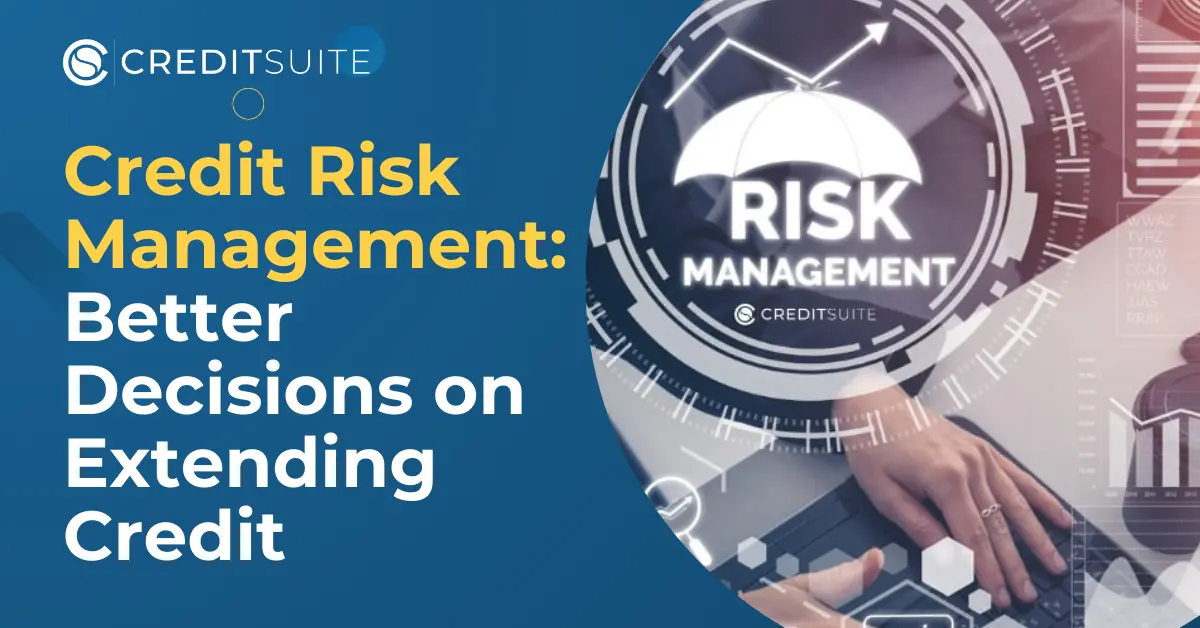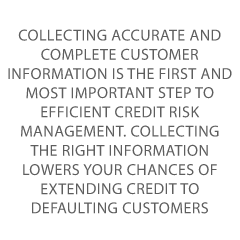Now more than ever, a good understanding of credit risk management is vital to the survival of many small businesses. It is now a common trend among small businesses to allow their customers to buy goods or services on credit and pay for them later, according to an agreement. But doing this does not come without its risks.
When businesses provide their product or service to customers and invoice them for payment later, they undertake the risk that the client may not pay on time or default with the fee entirely.
There’s no doubt it’s bad for businesses when clients do not pay on time or default on payment. According to a survey, 92% of companies reported that the negative effect of late payments had directly impacted them. And this is why effective credit risk management is essential for the success of your business.
Taking a risk by extending credit to your customers can benefit your business, but only if done correctly. By allowing your customers to purchase on credit, you can encourage them to spend more money on your business while standing out from competitors that don’t offer them that luxury.
According to Colin Palfrey, CMO of Crediful, “Businesses must employ the right credit risk management practices to reduce the risk of late payments or defaults, both of which can expose it to financial challenges.”
To protect your business, you must make an effort to perform due diligence and assess the creditworthiness of new and returning customers. If you don’t take the necessary credit risk management steps, you expose your business to failure, cash flow disruption, and bad debt. And you may need to get business loans to give you a much-needed boost.
This article will examine the most effective credit risk management techniques that small businesses can use to keep their operations running smoothly.
Top 4 Credit Risk Management Tips For Small Businesses
 Due to a dire need to make sales, onboard customers, and reach targets faster, many businesses often extend credit to customers without sufficient due diligence. But doing this is risky, and it is first necessary to assess the customer’s creditworthiness.
Due to a dire need to make sales, onboard customers, and reach targets faster, many businesses often extend credit to customers without sufficient due diligence. But doing this is risky, and it is first necessary to assess the customer’s creditworthiness.
By conducting business with new clients with poor ratings or no credit history, you put your business at risk of higher bad debts. Hence, it is crucial that you have the proper credit risk management in place for adequate risk assessment.
Credit risk management is a continuous process that will maintain your cash flow, improve efficiency, and protect your business’s financial health by reducing late or non-payment. Here are some of the most critical factors you should consider when assessing clients’ or potential clients’ credit risk:
- Payment history
- Business stability
- Industry risks
- Financial Health
- Business news
For effective credit risk management, businesses must be flexible and not employ a one-size-fits-all approach. The best credit risk management practice involves developing a dynamic strategy to reduce credit risk and identify clients most likely to default on payments.
Here are four of the most effective credit risk management practices you need to know today:
Providing online credit application forms makes it easier to gather and store critical information about customers during their onboarding process. To ensure you get all vital information, make the essential sections mandatory.
According to Jarret Austin, Owner of Bankruptcy Canada Inc., “Collecting accurate and complete customer information is the first and most important step to efficient credit risk management. Collecting the right information lowers your chances of extending credit to defaulting customers.”
Your credit risk analysis process will be faster and more efficient when you gather sufficient customer information. For best results, your online credit application forms should collect the following:
- Bank information
- Company information
- Terms of Payment
- Provisions in the event of non-payment
- A detailed description of the dispute resolution process
- Commercial trade information
- Your rights to end credit terms
-
Ensure You Have an Up-to-date Credit Policy
A well-defined credit policy keeps your clients accountable and protects your business from significant financial risks.
According to Anthony Martin, CEO of Choice Mutual, “A credit policy is imperative for every business that grants customers credit. And this credit policy must be reviewed and updated periodically to ensure that it is in line with current market conditions and standards.”
To ensure that your credit policy is standard, it must do the following:
- Set a maximum credit limit
- Qualify and disqualify specific clients from receiving credit
- Clearly define credit payment terms for eligible candidates
- State how you will collect the outstanding debt from defaulting clients
-
Analyze and Predict Credit Risk
You must assess a client’s ability to pay what they owe on time before you extend credit to them. Apart from considering the creditworthiness of the clients, it is also good practice to analyze the impact on your cash flow should the customer go delinquent.
Ben Michael, Founder of Michael & Associates, “A great way to assess a customer’s creditworthiness is by examining their payment history from financial sources such as credit bureaus, banks, and public financial statements. Data from these sources will help analyze and predict the potential credit risk posed by the customer.”
Before customer onboarding, you should review details about a customer’s financial behavior and ability to pay invoices based on their payment history and public records. This allows you to make an informed decision and offers insights into the level of risk associated with granting credit to the customer.
-
Monitor Credit Risk in Real Time
By using real-time credit monitoring, you can get live updates about potential risks before they get out of hand.
Jim Pendergast, Senior Vice President of altLINE Sobanco “Monitoring credit risk in real-time is a great way to quickly identify and mitigate it before it develops into a problem for your business. An effective real-time credit risk monitoring solution should integrate easily with credit agencies and quickly alert credit risk, management teams.”
Conclusion
Companies that invest in efficient credit risk management solutions will likely have better customer relationships, lower bad debts, and are more likely to succeed. Implementing innovative credit risk management solutions supports business expansion and growth.
Every business serious about maintaining its cash flow, lowering chances of late or non-payment, and improving its financial health must refrain from taking credit risk management practices with a pinch of salt. When done right, credit risk management can significantly increase the chances that you’ll get paid as of when due—and this means great business for you!
Author Bio:
 Catherine Schwartz, Finance Editor at Crediful
Catherine Schwartz, Finance Editor at Crediful
Catherine is a personal finance writer covering a wide range of investment topics with the aim to help people achieve financial freedom. Passionate about financial literacy and considers it one of the most important life skills.



